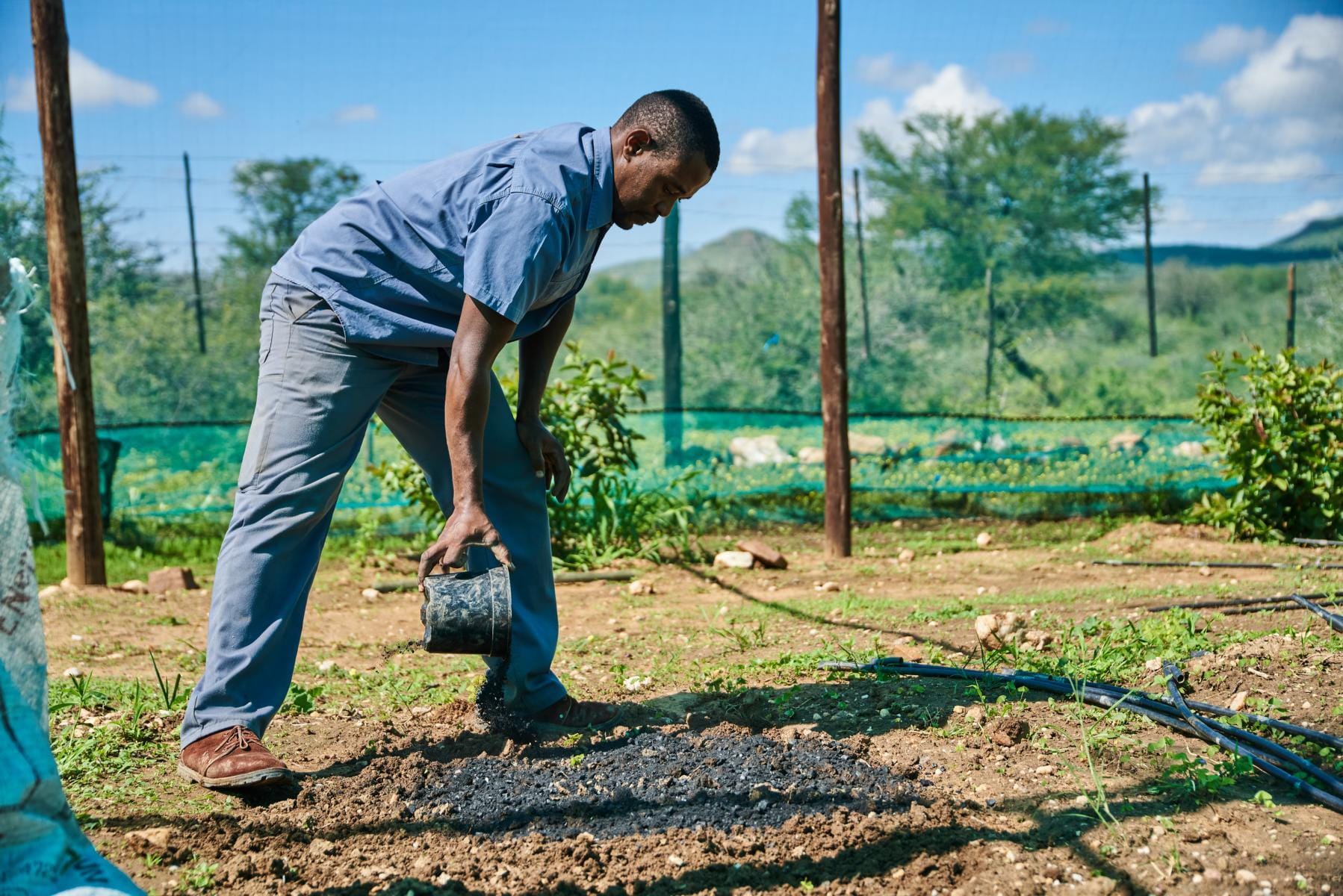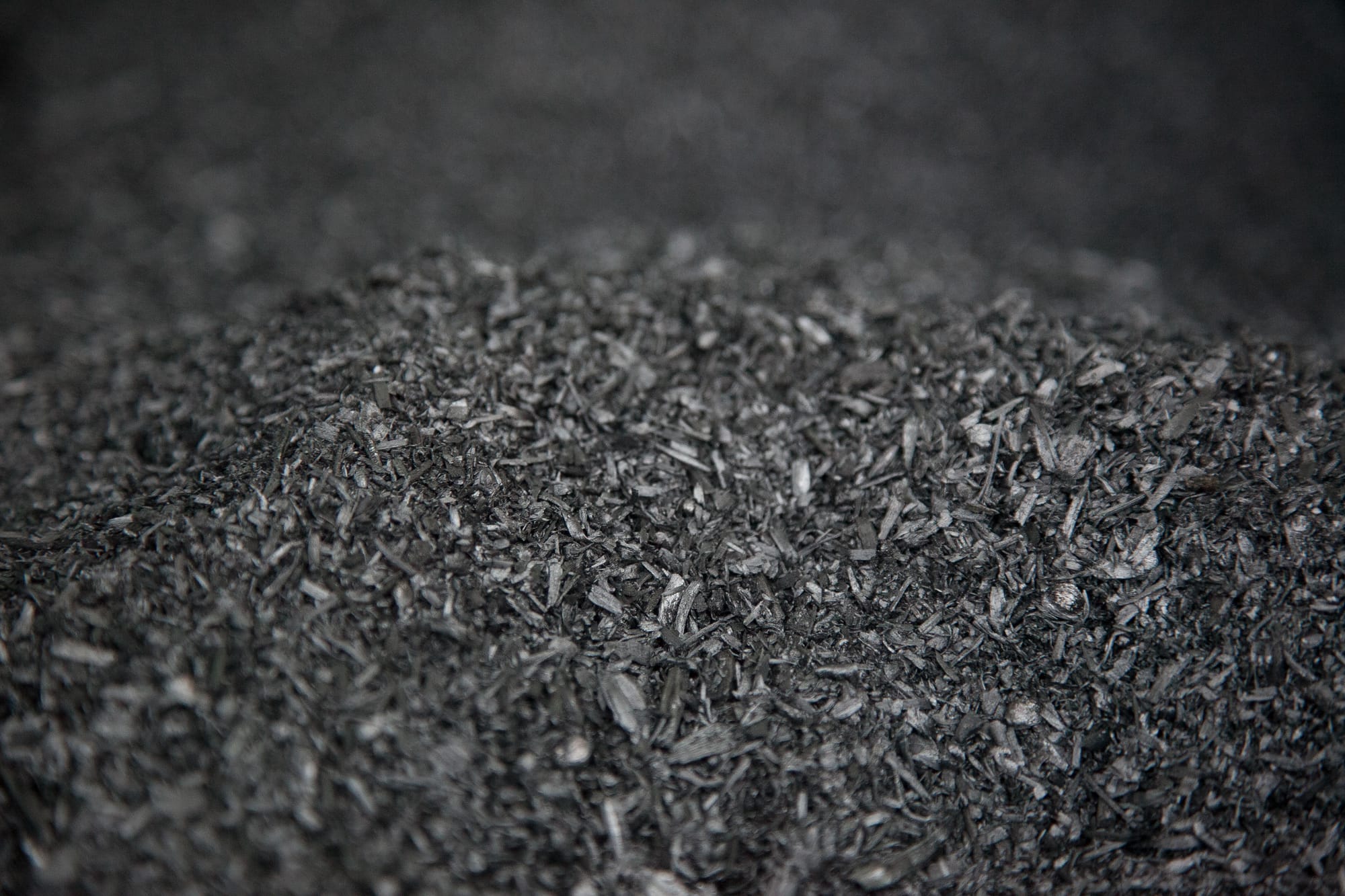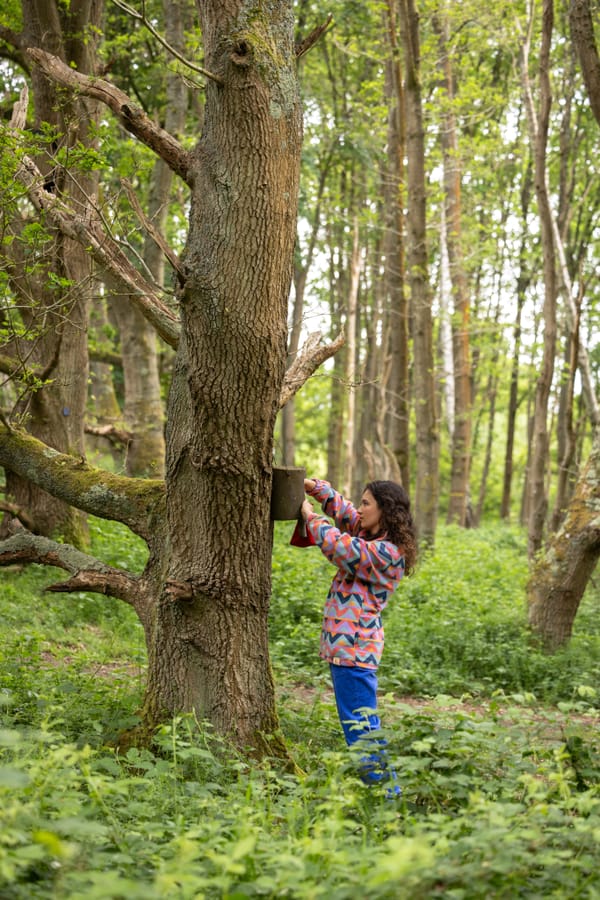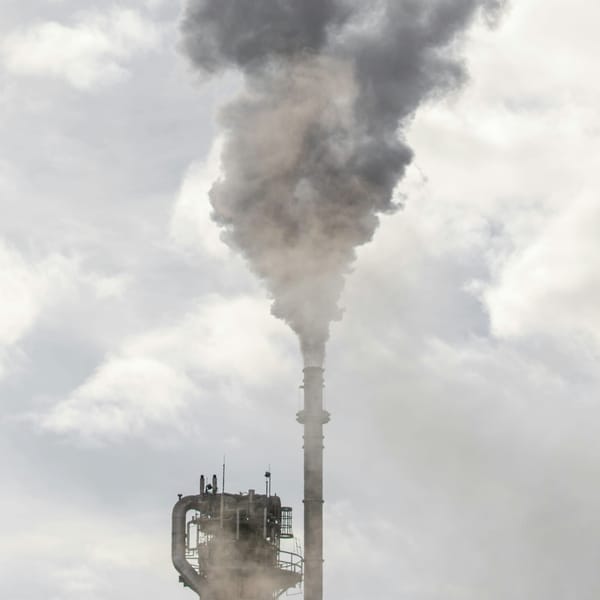What happens when you cook garbage at high temperatures without oxygen?
Deep in the Amazon basin, thousands of years ago, Indigenous peoples discovered something remarkable. Their cooking fires, burning low and steady, mixed with refuse, bone, pottery shards, manure, and organic waste created something almost alchemical.
Called terra preta, “black dirt” in Portuguese, these soils, which store massive amounts of carbon, still outperform surrounding land after centuries. At one archaeological site in Brazil’s Kuikuro Indigenous Territory, scientists recorded 4,500 tons of carbon, more than forty times what existed in nearby modern villages.
The Amazonians had created what we now know as biochar. A carbon-rich material, made by heating organic matter at high temperatures of around 400-600°C in the absence of oxygen.

Biochar looks like charcoal but behaves differently. With properties such as a large surface area, slight electrical charge and adjustable pH, biochar acts like a “nutrient battery” for soils, able to hold carbon for decades or centuries.
It’s this kind of potential that earned biochar recognition from the Intergovernmental Panel on Climate Change (IPCC) as one of the top 6 scalable negative emission technologies needed to address global warming.
The challenge now is whether an ancient practice can find footing quickly enough to tackle two of today’s biggest problems: food waste and carbon emissions.
To give you a sense of the possibilities, say we converted all the world’s crop waste into biochar, we could theoretically trap 1 billion tons of carbon annually. Even accounting for crop waste needed for animal feed, we’re still looking at 360 million tons of carbon locked away for at least a century.
Food waste biochar is especially attractive because it cuts disposal costs and creates revenue streams through carbon credits, with the added benefit of soil amendments. The United Kingdom plans to eliminate food waste from landfills entirely by 2030. This is an ambitious target, and one proposed solution is to build 28 biochar facilities across the country, each processing 20,000 tons of food waste annually. At full capacity, these facilities could remove about 93,000 tons of CO₂ from the atmosphere each year while tackling the food waste problem.
Extending this thinking globally, one study found that twelve countries could lock away a minimum of 20% of their national greenhouse gas emissions using biochar derived from farm waste. India could store half of its emissions this way, and Bhutan as much as 68%.
But does this all make sense financially?
The numbers tell a story of explosive growth. Global biochar revenue hit $600 million in 2023 and is projected to more than quintuple by 2025, according to the Global Biochar Market Report. Major institutions, corporations, and governments are also backing it with serious money. For farmers that have seen up to 40% return on investment (measured by a ratio of grain output to production plus biochar input), the economics is compelling.
Something as arguably useless as sewage, when processed by pyrolysis, could supply 7% of global phosphorus needs, or 15% when combined with urine, according to research from Cornell University. Phosphorus, a very important nutrient for plant growth, is often fortified through fertilisers and could use another derivative source.

Thoroughly mix some biochar with soil across the farm, and it can reduce soil erosion, increase soil porosity and water retention, and improve how water moves through the soil. These fundamental improvements in the very foundation of agriculture could drive overall productivity.
The farming benefits, which already seem magical, don’t end there. Biochar can boost crop yields. In studies, corn yields increased 15% from biochar application alone, about 1% less than when biochar was applied with fertiliser. Beans and rice, the world’s staples, showed similar improvements. Significant boosts in food production like this have profound implications for food security and farmers’ livelihoods.
However, context matters. Sandy, nutrient-poor soils see immediate benefits, while fertile soils might actually show diminished yields for the first year or two. Climate matters too: tropical regions see yield increases averaging 14.8%, compared to a measly 1.4% in temperate zones.
If it’s worth doing, it’s worth doing well; and in this case, the challenge lies in logistics. Supply chain fanatics know that when feedstocks are dispersed, seasonal and heterogenous, transportation costs can easily erode project economics. Production costs have dropped from $2,700 per ton in 2013 to $1,300 in 2021, but biochar remains expensive compared to conventional soil amendments.
Quality is another challenge. Biochar’s properties vary depending on feedstock and production method, with some types breaking down within decades instead of the promised century. If the hydrogen-carbon ratio is less than 0.4 and the production temperature is greater than 550°C, you can typically expect 70-90% of its carbon to be retained for up to 300 years. However, lower-quality biochar can lose a substantial amount of carbon within 50-100 years.
Big buyers are showing interest but remain cautious. Google, at the start of the year, committed to purchasing 100,000 tons of biochar carbon removal credits sourced from agricultural waste in India. Microsoft, JPMorgan, and other major firms have followed suit, but adoption remains concentrated among tech and finance companies with high margins and strong climate commitments.
Regulators of the industry are working with corporations to smooth monitoring, reporting, and verification workflows. The variability in biochar’s permanence is the ick factor for companies afraid of reputational backlash. High-quality biochar credits are scarce and therefore expensive, whereas carbon accounting for methods like direct air capture are simpler.
Nevertheless, solutions are emerging. Policy incentives are materialising as the European Union now includes biochar in its carbon removal certification system. Scientists across continents are working hard to standardise operations and outputs, while decentralised production is reducing supply chain inefficiencies.
Biochar’s story extends far beyond agricultural use. To name a few: banana peel and rice husk formulations can act as catalysts during biodiesel production, coffee-waste biochar can strengthen concrete, and inoculated biochar could have applications as electrodes in supercapacitors and hydrogen storage solutions.
What makes biochar’s story so compelling isn’t that it asks us to invent something revolutionary but that it asks us to remember something ancient and build upon it. The Indigenous peoples of the Amazon figured this out centuries ago. Now we get to scale their wisdom to feed the world and cool the planet









